Higher classification Jadera | Scientific name Jadera haematoloma Rank Species | |
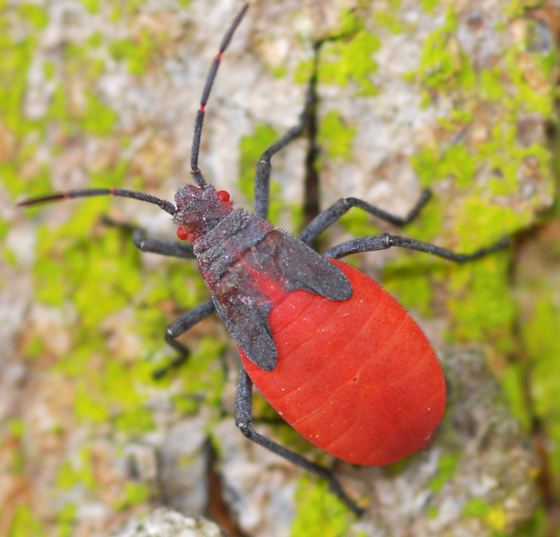 | ||
Similar Jadera, Serinethinae, True bugs, Insect, Rhopalidae | ||
Red shouldered bugs jadera haematoloma
Jadera haematoloma, the red-shouldered bug, goldenrain-tree bug or soapberry bug is a species of true bug that lives throughout the United States and south to northern South America. It feeds on seeds within the soapberry plant family, Sapindaceae, and is known to rapidly adapt to feeding on particular hosts. People often confuse this species with the boxelder bug.
Contents
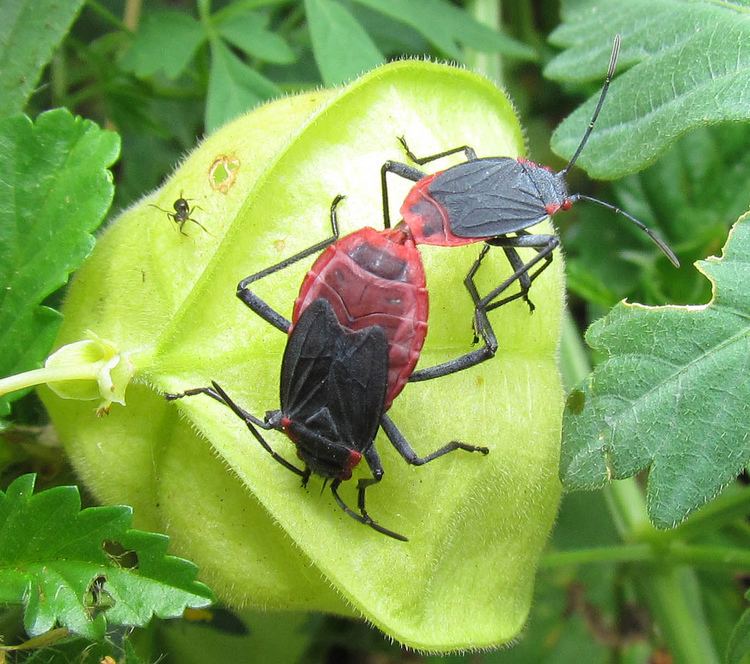
Description
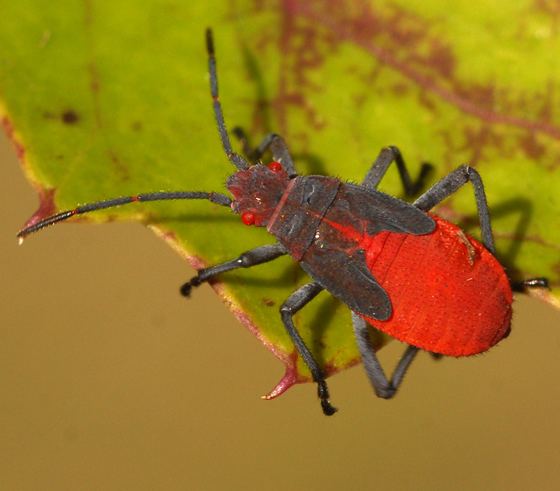
J. haematoloma are typically 9.5–13.5 millimetres (0.37–0.53 in) long and 3–4 millimetres (0.12–0.16 in) wide, though the short-winged form (brachyptera) usually is 7–8 millimetres (0.28–0.31 in) long. Color is mostly blackish (sometimes dark gray or purplish) except for red eyes, "shoulders" (lateral margins of pronotum), and costal margins and dorsal part of abdomen. Nymphs are mostly red with a black pronotum and wingpads. All appendages are blackish.
Distribution
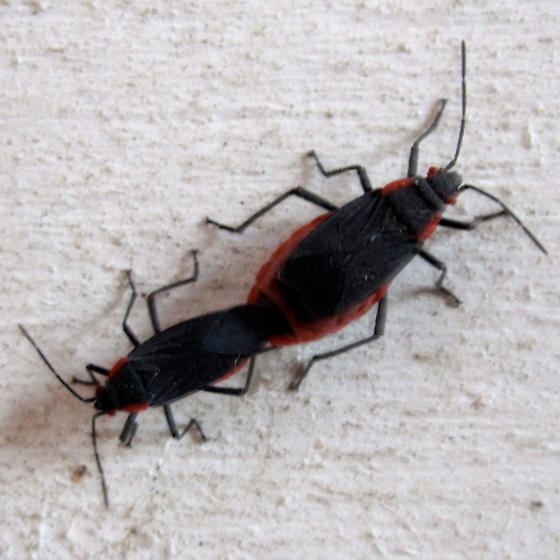
For most of the twentieth century, little was known about the range of J. haematoloma. Reports showed breeding populations to be present in Florida, Kansas, Colorado, Texas, Arizona, California, Alabama, Illinois, North Carolina, Missouri, Colorado, Iowa, as well as Georgia, South Carolina, North Carolina, Virginia, Pennsylvania and Maryland. A study published in 1987, showed the distribution of J. haematoloma "revealed the close correspondence of records for the bug with the ranges of the soapberry plants that serve as the insects native hosts." In addition, isolated examples have been reported as far north as Minnesota. Outside of the United States, J. haematoloma is found south through Central America and the West Indies to Colombia and Venezuela.
Evolution
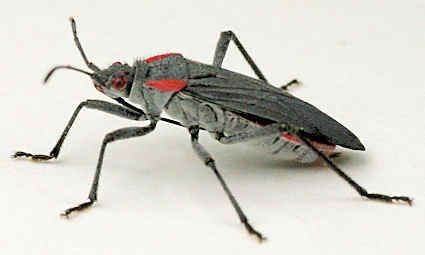
Two populations in southern Florida are particularly notable. The more southern of these two populations feeds on the seeds of a native host vine balloon vine (Cardiospermum corindum). This vine produces capsules of a fairly uniform size, which adult J. haematoloma feed on by inserting their mouthparts (beak) through the capsule's exterior and into the interior seeds. In the mid-1950s, a related southeast Asian tree, the Taiwanese Flamegold (Koelreuteria elegans), was introduced as an ornamental plant. It escaped domestication and naturalized. Significantly, the Flamegold was colonized by J. haematoloma, though its capsules are smaller and the seeds less deeply embedded than in the balloon vine.
In a significant research published in the journal Genetica in 2001, scientists reported observing swift evolutionary adaptations in the population of J. haematoloma that colonized the Flamegold tree, all within merely a few decades. This study pointed out that, originally, the beak lengths of this population were roughly 70% of their body length. However, their offspring living on the non-native tree showed a reduction in beak length to about 50% of their body size, despite no alteration in the bugs' overall body size.
...derived bugs mature 25% more rapidly, are 20% more likely to survive, and lay almost twice as many eggs when reared on seeds of the introduced host rather than those of the native host. Fecundity is also twice as great as that of ancestral type bugs reared on either host, while egg mass is 20% smaller.
